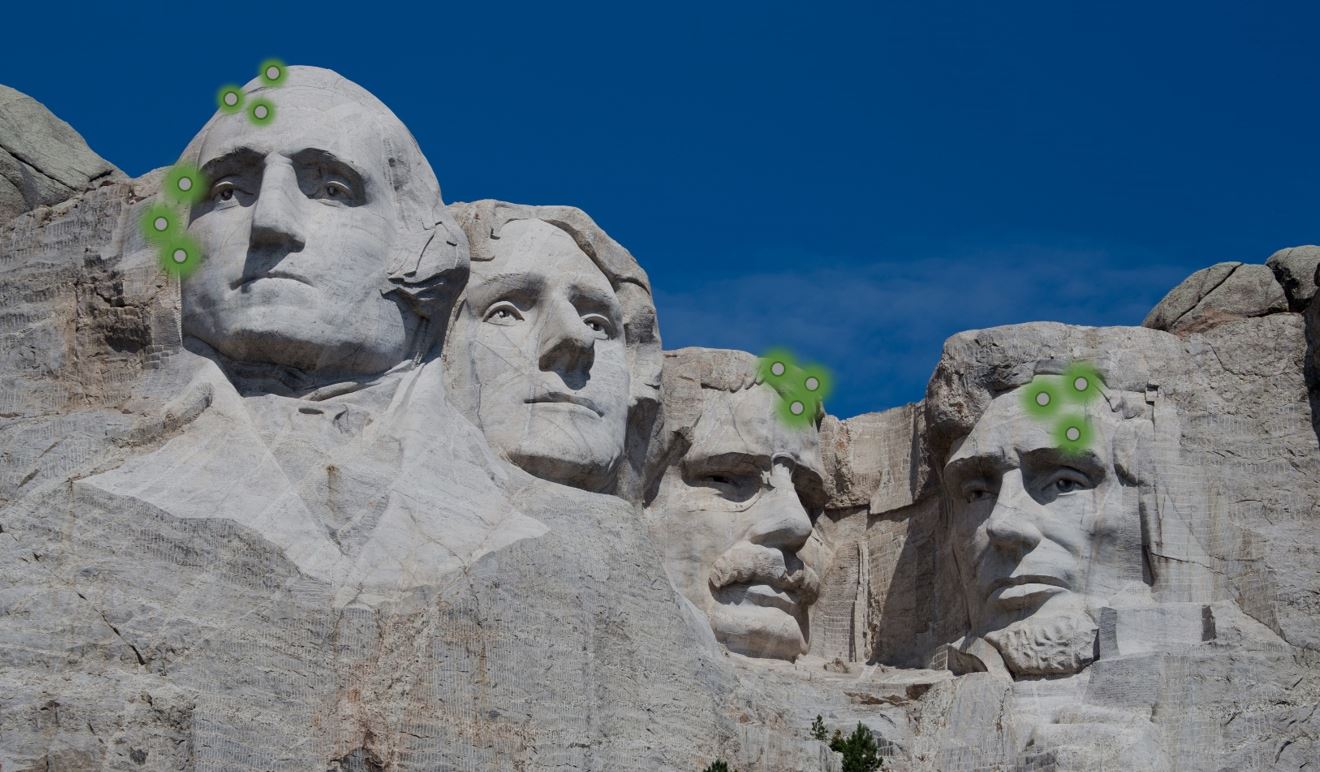The Luna Quarterly
Case study: Mount Rushmore

An iconic American landmark, Mount Rushmore features impressive 60-foot carvings of four American presidents into the rock of South Dakota's Black Hills at an elevation of nearly 6,000 feet. In order to preserve this attraction, it is imperative that Mount Rushmore have a reliable monitoring system to provide precise data on critical areas of the sculpture, where rock fracturing has occurred.
Luna, along with with partner Respec, developed a Rock Block Monitoring System (RBMS) using one sm125 HYPERION Optical Sensing Interrogator, 24 os3110 Optical Strain Gages, and 12 os4310 Non-metallic Temperature sensors. This system will help improve data quality and reliability, while reducing maintenance cost by replacing the existing RBMS. Four locations will be monitored on the mountain – two on Washington, one on Roosevelt, and one on Lincoln. Absolute temperature measurements will be made at each of the locations with an os4310 temperature sensor.
Frequent sensor replacement and repair trips will no longer be necessary, significantly reducing the cost of maintenance. Further, the system was designed such that additional gages and cable can be added with minimal intervention. A previously monitored station, abandoned due to lightning, has now been reactivated with the fiber optic sensing system, and hundreds of pounds of copper cable were replaced with five pounds of rugged fiber optic cables, thus eliminating the need for cumbersome and unsightly cable harnesses.